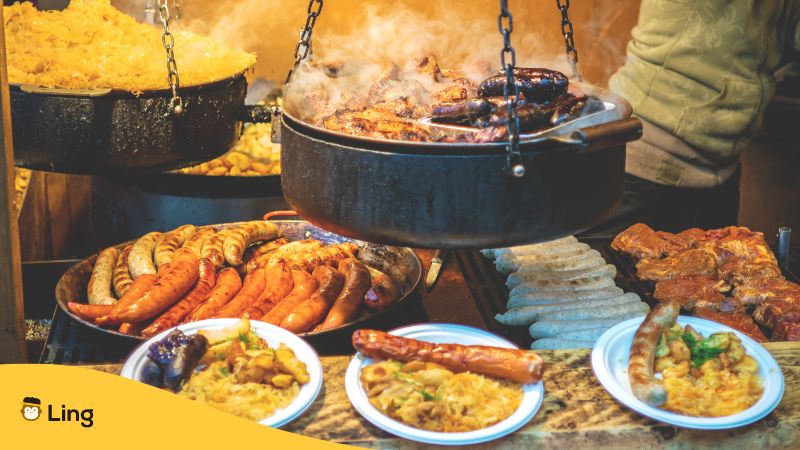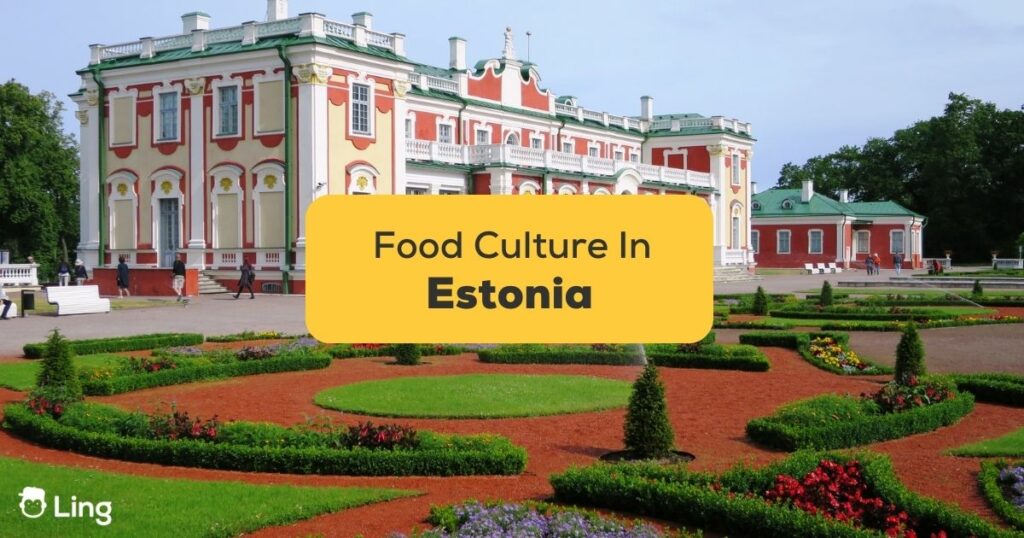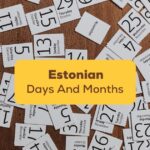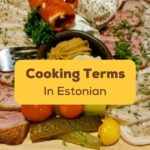Wondering about the food culture in Estonia? I can’t blame you! You know that exhilarating feeling at the airport, right before a new adventure when the whole world’s cuisine feels like it’s at your fingertips? Or the moment you first step foot into a bustling, foreign market, where the symphony of exotic scents and sounds overwhelms your senses? If such experiences make your heart skip a beat, then this Estonian post is for you.
Take a moment and imagine yourself in Estonia–a small yet vibrant country on the shores of the Baltic Sea, known for its heavenly blend of medieval allure and innovative spirit. Each weathered cobblestone on the streets of Tallinn (its charming capital) tells a story, as does each spoonful of the local cuisine. Yes, foodies and travelers alike, there’s much more to Estonia than the stunning views or technological prowess. The diverse, delectable and deeply satisfying food palette of Estonia is what we’re about to explore.
So, whether you’re nested comfortably at home, dreaming of your next escapade, or on the road looking for a new cuisine to tantalize your taste buds, get ready to virtually whisk away to the Baltic wonderland— a haven for historical villages, picturesque landscapes, and delightful food. Together, we will take a journey through the culinary tales that have been simmering in the heart of Estonia for centuries, subtly shaping its culture, traditions and people. Let’s begin!

Estonia: A Bite Into History
Nestled in Northern Europe, sandwiched between the frosty shoulder of Russia and the welcoming arms of the Baltic Sea, Estonia, a small yet fiercely independent country, has a historical narrative that’s as rich and complex as their mouth-watering black pudding (or Verivorst, as locals call it).
In medieval times, Estonia found itself at the crossroads of commerce and culture, hosting traders and explorers from Scandinavia, Russia, and even the Orient. Imagine a medieval Estonian marketplace — a flavorful fusion of spices from the East, fresh fish from the Baltic Sea, and game from the dense Estonian forests. Each seller, each item, and indeed, each aroma told a tale of the duality of survival and celebration.
Fast forward to the 18th and 19th centuries, when Estonia was under Russian rule. During this period, the influence of Russian cuisine began seeping into the local food culture, like warm borscht into freshly baked bread. Kasha (buckwheat porridge), pelmeni (dumplings), and, of course, borscht, all found their way onto Estonian tables.
However, Estonia’s gastronomic history is not just about foreign influences. The dark forests and the deep blue sea have played pivotal roles too. Pickles, preserves, and smoked meats speak volumes about the resourceful nature of Estonians in the face of harsh winters, while the abundance of fish dishes, mushrooms, and berries show gratitude towards Mother Nature.

Facts About The Food Culture In Estonia
- Historical Influence: Manorial cooking greatly influenced Estonian food culture. The stove and potatoes, which were introduced to local cooking in the mid-19th century, were quite significant to the cuisine. Prior to growing potatoes, bread, swedes, cabbage, turnips, as well as peas and lentils in the summertime were essential components in the diet of Estonians.
- Cold Dishes: Traditional Estonian cuisine often starts with cold dishes. This includes an assortment of pickles, meats, sausages served with potato salad or rosolje, a signature Estonian dish with beetroot, potatoes, and herring — remarkably similar to Swedish sillsallad.
- Seasonal Connection: Estonians have a profound relationship with their food. They value knowing where it comes from, and they typically prefer local products. This preference is one reason why Estonian cuisine, whether traditional or modern, has such a strong connection with the changing seasons and the local land.
- Game Meat: Estonia is a great place if you want to try game meat. One popular meat is wild boar, which Estonians use in a variety of dishes.
- Fish: Given the abundance of sprats in the Baltic Sea, these small fish are common in Estonian cuisine. Many Estonian dishes are made with sprats, one of the most popular being Kiluvõileib, an open-faced sandwich

Traditional Estonian Food
As you all know, it’s impossible not to talk about the traditional dishes in Estonia when we’re talking about the food culture. So without further ado, we listed here the dishes you know of!
Kama
A versatile superhero disguised as an ordinary mix of barley, rye, oat, and pea flour, Kama is the culinary chameleon that Estonia holds dear. Does this beige, mild-looking powder make you wonder, ‘where’s the twist?’ Get this – Kama is a food transformer! It effortlessly sways to the rhythm of breakfast, dessert, or light snacks while maintaining its diva-esque knack for adapting to any culinary situation. It’s no wonder Kama remains a staple in the Estonian diet, humbly yielding extraordinary gustatory revelations in every dish.
Black Rye Bread
If Estonia’s food culture were a band, black rye bread would be the lead singer who never fails to mesmerize. Also known as ‘the black diamond’ of Estonian food, this dense, dark treasure is the cornerstone of every meal. Cherished for its hearty texture and rich flavors, the black rye bread amplifies the joy (and taste) of not just eating, but living the authentic Estonian experience. Trust us, neglect this bread and risk missing the essence of Estonia’s food melody!
Mulgi Kapsad
Few things rival the warm embrace of a delectable stew on a chilly Estonian evening. This is where the Mulgi Kapsad, Estonia’s national dish, shines! This slow-cooked creation featuring pork, sauerkraut, and potatoes showcases the Estonian talent for turning simple ingredients into joy-infused sorcery. With each hearty spoonful, Mulgi Kapsad leaves a lingering love note on your tongue.
Sült
Festive occasions in Estonia are incomplete without Sült, a savory jelly terrine made with pork meat and spices. With a touch of theatrics, Estonians transform basic ingredients into a beautiful, wobbly display of culinary artistry. And, masterpieces aren’t meant to be marveled at from afar; oh no, cravings demand that Sült be devoured with gusto. Prepare to have your world rocked by this humble dish’s transformative powers—guaranteed to shake your preconceptions with a quiver!
Verivorst
As the winter air crisps up and the snow begins to fall, one dish takes the center stage in Estonian homes — Verivorst. A black pudding sausage traditionally served with lingonberry jam during Christmas, it’s a true star of the holiday season. It’s like the Santa Claus of Estonian gastronomy, coming out every winter to delight both the naughty and nice with its deep flavor profile and comforting heartiness. The sausage, filled with a mix of barley and pig’s blood, seasoned generously and then cooked to perfection, bursts with every characteristic feature of Estonia’s culinary wonderland. As you lay it gently on your plate, it whispers a promise of warmth, satisfaction, and a merry food-coma.
Learn Estonian With Ling
Are you itching to dive into the world of Estonian culture, navigate your way through its vibrant food scene, or engage in delightful conversations with the locals? We have the perfect solution for you — Learn Estonian with Ling! Don’t let linguistic barriers spoil your Estonian adventure or stop you from mastering the ancient and unique Uralic language. Equip yourself with the app that’s crafted with love, expertise, and a sprinkle of humor, blending practicality and entertainment to create a learning experience that’s downright enjoyable.
So, don’t miss out, and download Ling from the Apple App Store or Google Play Store right away!



































































